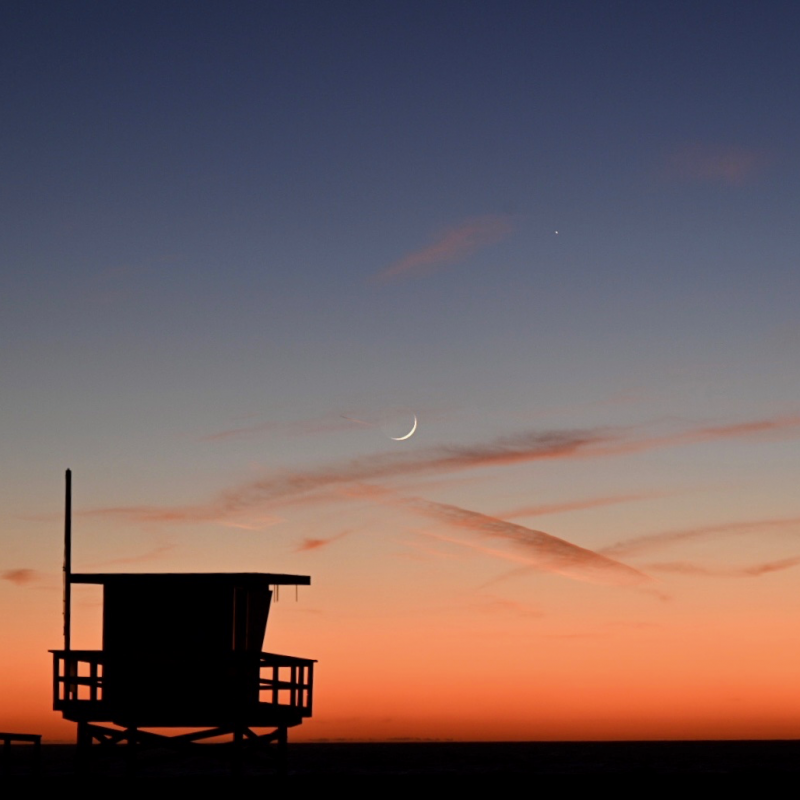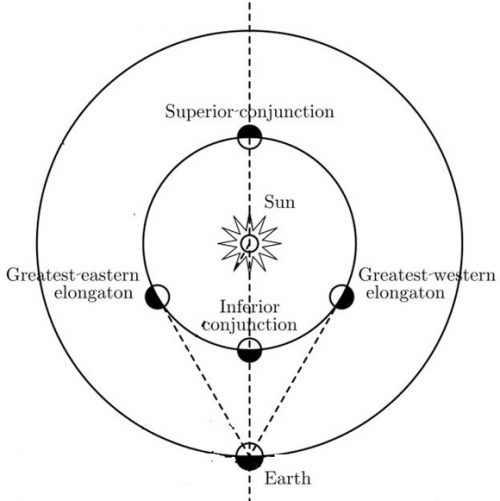
Mercury’s greatest evening elongation
Mercury – the most elusive planet – is actually quite bright. When Mercury is visible, it’ll look brighter than most stars, shining in morning or evening twilight. Mercury is named for the fleet-footed messenger god of the Romans. Today, we know it’s our sun’s innermost planet. We know it moves fast around the sun, completing an orbit in only 88 days. And that’s why we on Earth see Mercury zip in and out of our sky, always near the sunrise or sunset, morning, evening, morning, evening … back and forth half a dozen times over the course of an earthly year. We never see Mercury high in a dark sky. We never see it far from sunrise or sunset. Our best chances to bag Mercury come when the innermost planet stretches its farthest from the sun from our point of view, either before sunrise or after sunset. One of those times happens this week. On January 7, 2022, Mercury will reach the end of its tether with respect to the sun in our sky, an event called greatest eastern elongation by astronomers. That position lifts Mercury a bit higher into our western twilight sky at sunset. Watch for it shortly after the sun goes down!
The exact time of Mercury’s greatest elongation is 11 UTC or 5 a.m. CST on January 7, 2022. So either the evening of January 6, or the evening of January 7, would be a great time to look for Mercury.
At this greatest elongation, Mercury will be 19.2 degrees from the sun and shining at magnitude -0.6. It’ll be brighter than Saturn, which floats above it, but not brighter than Jupiter, which is higher still.
Just remember … Mercury is bright, not faint. It isn’t more noticeable because we typically see it in a twilight sky, where it competes with the glow of sunset or sunrise. It’s also often behind trees, buildings, hills and other obstructions near the western horizon.

How to spot Mercury after sunset
Mercury won’t venture very far above the horizon after sunset. As soon as the sun disappears below your horizon, the clock starts ticking. Will you see the glowing point of light that is Mercury before it follows the setting sun? To find out when the sun sets at your location and what time Mercury sets, use these links to the Old Farmer’s Almanac (U.S. and Canada) or timeanddate.com (worldwide). Or check out Mercury by looking at the online planetarium program Stellarium.
To help you spot Mercury, use the chart above. You’ll see Mercury and Saturn in the sunset glare along with Jupiter and the moon above and the bright stars Fomalhaut and Altair on either side. Can you spot Mercury before it disappears below the horizon? How about Saturn?
If you spot Mercury on any of the dates shown on the chart above (January 4 to 7), follow it for some nights after that. As both Mercury and Saturn edge toward the sunset horizon, they’ll also be edging closer to each other. They won’t quite meet, though, before Mercury sinks back below the horizon, ending this evening apparition. When will that happen? It depends on your location on the globe, your sky conditions, and other factors. But, for most of us, Mercury will probably be gone again by mid-month.
A comparison of elongations
Not all of Mercury’s greatest elongations are created equal. Some are greater than others. The farthest from the sun that Mercury can ever appear on the sky’s dome is about 28 degrees. The least distance is around 18 degrees.
Elongations are also better or worse depending on the time of year they occur.
In the autumn for either hemisphere, the ecliptic – or path of the sun, moon and planets – makes a narrow angle to the horizon in the evening. But it makes a steep slant, nearly perpendicular, in the morning. So – in autumn from either hemisphere – morning elongations of Mercury are best. Then Mercury appears higher above the horizon and farther from the glow of the sun. Evening elongations in autumn are harder to see.
In the spring for either hemisphere, the situation reverses. The ecliptic and horizon meet at a sharper angle on spring evenings and a narrower angle on spring mornings. So – in springtime for either hemisphere – evening elongations of Mercury are best. Morning elongations are harder to see.

Bottom line: Mercury will be at its greatest elongation east on January 7, 2022. So this is a great time to spot Mercury in the sky after sunset!
The post Mercury’s greatest evening elongation January 7 first appeared on EarthSky.
0 Commentaires